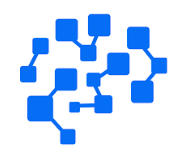2.376552.598305: In today’s fast-paced digital era, numbers often hold more power than words. They serve as identifiers, coordinates, algorithms, and even keys to unlocking hidden systems. Among the endless sea of numerical sequences, one particular string that sparks curiosity is 2.376552.598305. At first glance, it appears like a random assortment of digits after a decimal point, but in reality, such numbers are rarely meaningless. They represent precision, order, and structure in systems that demand absolute accuracy. Whether applied in mathematics, digital security, finance, or mapping, this number can stand as a symbol of how deeply technology relies on decimals and exact data points. Exploring it helps us understand not only the number itself but also the bigger role that precision plays in shaping the digital and scientific landscapes of our time.
When discussing a value like 2.376552.598305, one of the first things to acknowledge is how different industries interpret it differently. A data analyst might see it as a precise index, a geographer might interpret it as a coordinate, while a cryptographer could consider it part of a digital key. The beauty of such numbers lies in their versatility—there is no single fixed meaning until context is applied. This blog aims to dive into the depths of what 2.376552.598305 means, why it holds significance, how it operates across systems, its pros and cons, the key factors behind it, and its ultimate value in today’s world.
What is 2.376552.598305?
At its simplest level, 2.376552.598305 is a long, decimal-heavy number. Numbers like this are typically used in areas that require extremely fine margins of error. For example, in geospatial sciences, such decimal-heavy values are applied to latitude and longitude. A number with six decimal places in a GPS coordinate can pinpoint a location within a few centimeters. That makes a number like this incredibly valuable for applications where accuracy is not optional but critical.
Beyond mapping, such numbers also exist in scientific research. When chemists calculate molecular weights, or physicists determine constants, they often use values that extend far beyond simple whole numbers. Precision like this ensures that their formulas remain accurate and that results can be reproduced by others. In finance, too, trading systems often break down stock prices or currency exchanges into values that include several decimals, because the difference of even 0.000001 can affect millions of dollars. Thus, 2.376552.598305 could be interpreted as a universal placeholder for numerical precision across multiple industries.
In digital systems, the same number may serve an entirely different purpose. Large-scale databases, for instance, rely on unique identifiers to distinguish one entry from another. To prevent duplication, some identifiers look very similar to strings like 2.376552.598305. They are not random but generated through algorithms to ensure that no two numbers ever overlap. That means a sequence like this can represent uniqueness, security, and structure in computer science as well.
Why is 2.376552.598305 Important?
The importance of a number like 2.376552.598305 lies in the fact that decimal values carry weight in decision-making systems. In the physical world, decimals determine accuracy. A scientist measuring chemical solutions cannot afford to round off values because even the slightest difference can alter an entire reaction. Similarly, an engineer designing a machine part relies on measurements like this to ensure that pieces fit together with no gaps or errors.
In digital and technological systems, numbers like 2.376552.598305 serve as the backbone of security and order. Encryption keys, blockchain transactions, and even online banking systems depend on unique identifiers that may appear like random numbers. Without them, secure systems would collapse. These values maintain the trust and stability of our digital economy.
Another reason this number is important is its role in location tracking and mapping. In our era of logistics, ride-hailing apps, delivery services, and drones, precision is critical. A coordinate that uses six or more decimal points ensures accuracy down to just a few centimeters. For a delivery drone, that can mean the difference between landing at the right doorstep or the wrong one. Thus, a number like 2.376552.598305 is not just digits; it can be the difference between accuracy and failure in real-world systems.
How Does 2.376552.598305 Work?
The way 2.376552.598305 works depends entirely on the system that uses it. If it’s part of a mapping system, it functions as a geolocation marker, helping GPS satellites interpret and transmit the exact position of an object on Earth. The more decimal places a coordinate has, the more accurate the location becomes, which is why such a number can work seamlessly with navigation technologies.
In data science, such a number may be used in statistical models or predictive algorithms. Machine learning systems process billions of values, and identifiers like this help classify, sort, and manage vast amounts of information. Without precision identifiers, data models would be unable to distinguish between millions of variables. This is how such a number works in the realm of artificial intelligence—by serving as a building block for complex predictive frameworks.
In cryptography, a sequence like 2.376552.598305 could operate as part of a cryptographic key. Encryption systems work by combining large prime numbers and decimal sequences to generate secure keys that hackers cannot easily break. The presence of long and complex numbers ensures stronger encryption, meaning more protection for data. Here, this number “works” as an essential element of digital safety.
Pros of 2.376552.598305
The biggest advantage of a number like 2.376552.598305 is its precision. In a world where small differences create massive outcomes, precision is everything. For example, in aviation, navigation coordinates must be exact to prevent accidents. Similarly, in financial trading, decimals determine the success of trades. This level of accuracy guarantees trust and reduces errors.
Another major pro is its uniqueness. Sequences like this are rarely repeated by accident, which makes them perfect as identifiers. In databases or blockchain systems, uniqueness prevents duplication, ensuring every entry or transaction remains distinct. This protects integrity and enhances reliability.
A third advantage is security. When integrated into cryptographic systems, long decimal-heavy numbers increase the difficulty of decryption attempts. This makes hacking harder and strengthens data protection. Furthermore, numbers like 2.376552.598305 can also support scientific research, where reproducibility and reliability of results are essential for progress.
Cons of 2.376552.598305
Despite its many advantages, 2.376552.598305 comes with drawbacks. One is complexity. Most people cannot easily interpret such numbers without the right context. While it holds value in professional systems, it may look like nonsense to the general public. This creates a gap between experts and non-experts.
Another con is system dependency. A number like this requires advanced infrastructures—such as databases, GPS satellites, or encryption frameworks—to be meaningful. Without these systems, the number has no direct value to the average person.
A third issue is human readability. Numbers with many decimals are hard to remember, write down, or share accurately. A small mistake in transcribing the number can cause massive errors, whether in location tracking or data analysis. Finally, there is a risk of misinterpretation. Without context, some may dismiss it as random digits rather than recognizing its precision-driven purpose.
Key Factors About 2.376552.598305
Several key factors define the usefulness of 2.376552.598305. First is context. The same number can represent entirely different things in finance, mapping, or cryptography. Without context, its meaning remains unclear. Second is precision. Every decimal carries weight, and removing or altering even one digit can change the entire meaning. Third is application. How the number is applied—whether in science, business, or digital systems—determines its impact.
Another important factor is accessibility. Not all systems are equipped to handle numbers with such long decimals. Having the right software, algorithms, and infrastructure is crucial. The final key factor is interpretability. Experts must be able to explain these numbers in simpler terms so that non-specialists can understand their importance. Without this bridge, the power of such numbers remains confined to specialists alone.
Conclusion
The number 2.376552.598305 may look ordinary at first, but its role in modern systems is anything but simple. It represents precision, reliability, and uniqueness, which are qualities that shape industries ranging from finance to science to digital security. Whether used as a coordinate in GPS systems, a unique identifier in a database, or a decimal factor in advanced mathematics, this number highlights how much the world depends on exactness in data.
While it comes with limitations such as complexity and readability challenges, its benefits far outweigh the downsides. Its precision prevents errors, its uniqueness strengthens security, and its structure enables scientific progress. The key to unlocking its true potential lies in context and application. Businesses, researchers, and technologists who understand how to use such numbers can gain a strong competitive edge in accuracy, trust, and innovation.
Ultimately, 2.376552.598305 is not just a number. It is a reminder that in our digital age, even the smallest decimal can carry massive significance. Those who learn to interpret and apply it correctly will find themselves better equipped to navigate the increasingly data-driven future.

